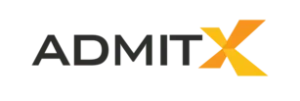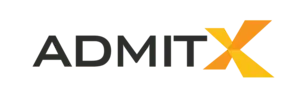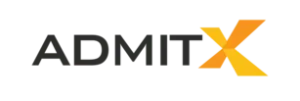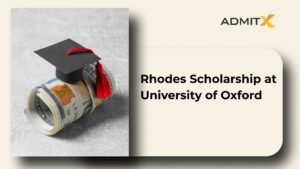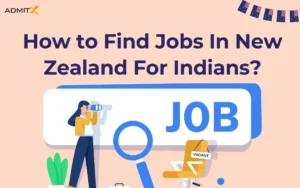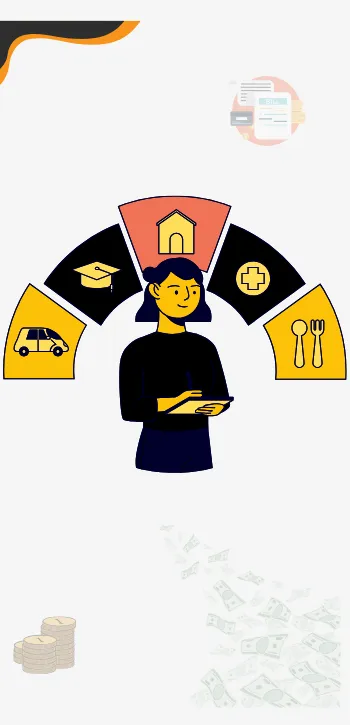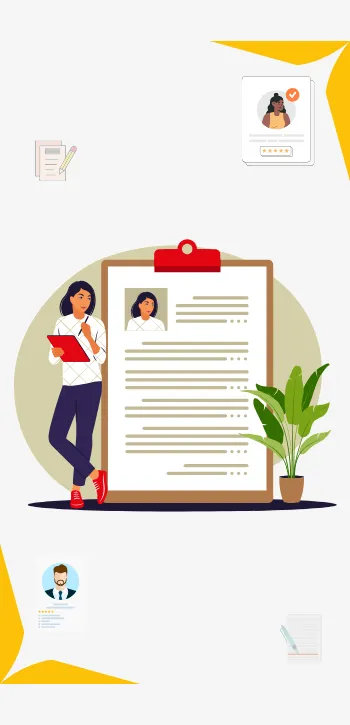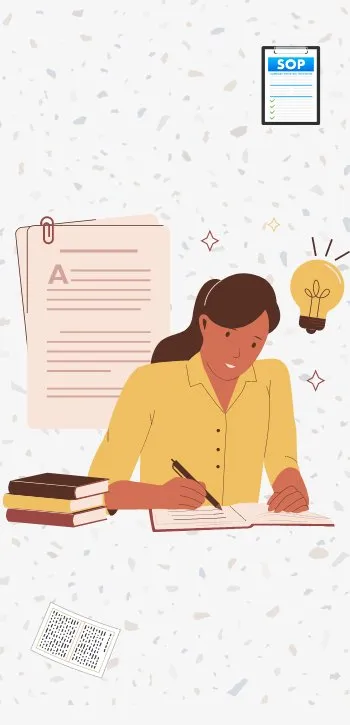- Green Card approval grants US permanent resident status, enabling unrestricted employment, travel flexibility, and a pathway to American citizenship after 5 years.
- Employment-based Green Card categories EB-2 and EB-3 are primary routes for Indian H-1B professionals transitioning to permanent residency in the USA.
- H-1B visa extensions beyond 6 years are permitted when your US employer officially initiates the Green Card sponsorship process.
- Step-by-Step Immigration Timeline: Pathway to PR in USA
- Choosing the Right Course and University for PR Goals
- F-1 Student Visa: Your Entry Point to America
- Optional Practical Training: Your First Professional Experience in America
- H-1B Visa: The Bridge to Permanent Residency
- H-1B Visa Hike: New September 2025 Update
- Green Card in the US: Transition to Permanent Residency
- Conclusion: Is the Student Route Worth Pursuing to Settle in the USA?
- FAQs

Landing in the USA on a student visa can be the first step towards permanent residency. For many Indian students, this is a realistic pathway that begins the moment they start their studies. Opportunities such as Optional Practical Training (OPT), employer sponsorships, and eventual Green Card eligibility make the transition achievable, particularly in high-demand sectors like tech, healthcare, and engineering.
In this blog, we explore how students can navigate the journey to achieve permanent residency in the USA.
Step-by-Step Immigration Timeline: Pathway to PR in USA
Before you pack your bags, understanding how students actually settle in America will save you years of confusion. The journey is not automatic, but it follows a predictable sequence.
Most Indian students enter the USA on an F-1 visa to study at accredited institutions. After graduation, they can work on OPT for 12 months, extended to three years for STEM fields, to gain experience and seek H-1B sponsorship. From there, the path to a Green Card begins.
This is where Indian nationals face their biggest challenge: unprecedented wait times that can span decades.
| Stage | Visa Type | Duration | Key Details / Purpose |
|---|---|---|---|
| Study | F-1 Student Visa | 2 to 4 years | Complete a degree program at a US-accredited institution |
| Work Training | OPT (F-1 extension) | 12 months (36 months total for STEM) | Gain practical work experience in your field of study |
| Employment | H-1B Work Visa | 3 years (extendable to 6 years total; further extensions possible if Green Card pending) | Employer-sponsored work authorisation through the H-1B lottery system |
| Permanent Residency | Green Card (EB-2/EB-3) | Waiting time: 12–15+ years for Indians | Employment-based permanent residency with severe backlogs for Indian nationals |
| Citizenship | US Passport | Eligible after 5 years as a permanent resident | Optional naturalisation as an American citizen |
Choosing the Right Course and University for PR Goals
Your choice of program or major directly impacts your employability and PR prospects in the United States of America.
- STEM fields (Science, Technology, Engineering, and Mathematics) offer the longest OPT extensions and highest employer sponsorship rates.
- Computer science, data analytics, electrical engineering, and healthcare programmes consistently lead to H-1B sponsorships.
Business degrees also perform well, particularly MBAs from recognised institutions. The goal is to study something that American employers actively recruit for.
F-1 Student Visa: Your Entry Point to America
The F-1 visa serves as the legal gateway for international students seeking to pursue full-time academic programs at SEVP-certified American institutions. This non-immigrant visa allows students to remain in the United States for the entire duration of their academic program, provided they maintain full-time enrollment and satisfactory academic progress.
Work Rights and Practical Training
The visa grants students several employment opportunities during their academic journey:
- Students can work on campus for up to 20 hours per week when school is in session and full-time when school is not in session.
- Curricular Practical Training (CPT) allows students to gain work experience through internships and cooperative education programs directly related to their field of study while still enrolled in the program.
- Upon graduation, F-1 holders automatically qualify for Optional Practical Training, which provides up to 12 months of work authorisation, with a STEM-OPT extension available up to 3 years.
Family Provisions
F-1 holders can bring immediate family members—spouses and unmarried children under 21—to the United States on F-2 dependent visas, though these dependents are not permitted to work.
Optional Practical Training: Your First Professional Experience in America
Optional Practical Training (OPT) is a temporary employment authorisation that allows F-1 students to work in the United States for up to 12 months in employment directly related to their major area of study. Students remain on F-1 status during this period but gain the legal right to work in positions directly related to their field of study.
Employment Flexibility
The program offers significant flexibility in employment arrangements:
- Participants authorised for post-completion OPT may work part-time (at least 20 hours per week) or full-time.
- Self-employment is permitted with proper documentation, allowing graduates to launch their own ventures or work as independent consultants.
- This period allows graduates to build American work experience, develop professional networks, and demonstrate their value to potential H-1B sponsors.
The STEM Advantage
STEM degree holders can apply for a 24-month extension of their post-completion OPT if they have earned a degree in certain Science, Technology, Engineering and Mathematics fields included on the STEM Designated Degree Program List.
This gives them a total of 36 months of work authorisation, significantly increasing the likelihood of securing H-1B visa sponsorship from an employer.
H-1B Visa: The Bridge to Permanent Residency
The H-1B visa represents the primary pathway for international professionals to transition from temporary student status to long-term employment in the United States. This non-immigrant visa is reserved for speciality occupations that require theoretical and practical application of highly specialised knowledge.
Duration and Professional Status
The visa grants up to six years of work authorisation, typically issued in an initial three-year period with the possibility of a three-year extension. Unlike student visas, H-1B holders are considered professional employees entitled to full salary and benefits commensurate with their position and experience level.
The Dual-Intent Advantage
The visa’s most significant feature is its dual-intent classification, which distinguishes it from most other temporary visas:
- H-1B holders can simultaneously pursue permanent residency, commonly known as a green card, while maintaining their temporary work status.
- Extensions beyond the standard six-year limit become possible once an employer initiates the green card sponsorship process, allowing workers to remain in the US while their PR applications are processed.
Family and Employment Portability
H-1B holders can bring spouses and unmarried children under 21 to the United States on H-4 dependent visas. Many H-4 spouses qualify for employment authorisation, allowing families to build dual-income households.
H-1B Visa Hike: New September 2025 Update
On September 19, 2025, President Trump signed a proclamation imposing major changes to the H-1B programme effective September 21, 2025. Here are the critical updates:
New $100,000 Fee Requirement
- A one-time $100,000 payment is now required with new H-1B petitions filed on or after September 21, 2025
- This applies to new cap-subject H-1B petitions and certain cap-exempt filings
- Petitions filed before September 21, 2025 are not subject to this fee
- Existing F-1 students, H-1B holders and previously approved petitions remain unaffected
Who Must Pay
- Employers filing new H-1B petitions for beneficiaries seeking initial entry to the United States
- This significantly impacts new H-1B applicants, particularly Indian students transitioning from OPT
Who Doesn’t Pay
- Current H-1B holders extending their existing status with the same employer
- H-1B workers transferring to a new employer (H-1B portability/transfer petitions)
- Existing F-1 students already in the United States on valid student visas
- Petitions filed before September 21, 2025 that are still being processed
- H-4 dependent visa holders accompanying or joining H-1B visa holders
- Previously approved H-1B beneficiaries re-entering the United States on the same petition
Green Card in the US: Transition to Permanent Residency
Employment-based Green Cards are divided into different categories based on skills and qualifications. Most Indian H-1B professionals apply through the EB-2 (for advanced degrees or exceptional ability) or EB-3 (for skilled workers and professionals) routes.
To begin the process, the employer must first complete PERM labour certification, which confirms that no qualified U.S. worker is available for the job. After that, the employer files an immigrant petition on behalf of the employee.
Employment-Based Green Card Categories for Indians
| Green Card Type | Who Can Apply | Current Wait Time | Employer Sponsorship Needed? |
|---|---|---|---|
| EB-1 – Priority Workers | Executives, researchers, or individuals with extraordinary ability | Moderate backlog | Sometimes |
| EB-2 – Advanced Degree Professionals | Master’s degree or exceptional ability | Long waiting periods | Yes |
| EB-2 NIW – National Interest Waiver | Exceptional professionals contributing to U.S. national interest | Limited backlog, strict criteria | No |
| EB-3 – Skilled & Professional Workers | Bachelor’s degree or 2+ years’ experience | Longest delays | Yes |
Conclusion: Is the Student Route Worth Pursuing to Settle in the USA?
After learning about multi-year waiting time and substantial financial investments, you might question whether settling in the USA through the student route truly makes sense. The honest answer depends entirely on your individual priorities, financial capacity, patience level, and backup plans.
For Indian students who successfully complete this journey, the benefits can be substantial: significantly higher earning potential, global career mobility, access to cutting-edge industries and research, quality of life improvements, and opportunities for future generations. The F-1 to OPT to H-1B to Green Card pathway remains the most established route for Indians to gain American citizenship.
Research STEM-designated programmes thoroughly and build relevant technical and professional skills. Remember that settling in America represents not a finish line but rather the beginning of a new chapter requiring continuous effort and adaptation.
Ready to Take the Next Step?
Pursuing higher education in the USA remains a strategic pathway for Indian students to build a global career. At AdmitX, our expert counsellors have successfully guided thousands of Indian students to top US universities, providing comprehensive support, including:
- University Selection Guidance
- SOP Review
- Study-Abroad Document Templates
- Free IELTS Bootcamp Course
- Scholarship Assistance
- Visa Support Services
Book your FREE study-abroad counselling session with our experts today!
Beyond the monetary support, scholars gain access to world-class resources, mentorship from distinguished faculty, and a lifelong network of changemakers across 100+ countries. For Indian students who reflect academic brilliance, this scholarship offers a unique opportunity to cultivate skills, knowledge, and connections.
Start your application early, showcase your authentic self, and join thousands of Rhodes Scholars who have shaped history.
Ready to live the extraordinary life at the University of Oxford?
At AdmitX, we have helped thousands of Indian students secure admissions into top UK universities. We guide you every step of the way, from selecting the right university to obtaining your student visa.
Our end-to-end study-abroad services include:
- University Selection Guidance
- SOP Review
- Study-Abroad Document Templates
- Free IELTS Bootcamp Course
- Scholarship Assistance
- Visa Support Services
And much more!
Book your FREE study-abroad counselling session today!
FAQs
Can F-1 visa holders work whilst studying in America?
Yes, F-1 students may work on campus for 20 hours weekly during term time and 40 hours during academic breaks.
How long can Indian students work in the USA after graduation on OPT?
Indian students receive 12 months of standard OPT, whilst STEM graduates qualify for 36 months of total work authorisation.
Does the EB-2 NIW Green Card require employer sponsorship for Indian professionals?
No, the EB-2 National Interest Waiver allows eligible professionals to self-petition without employer sponsorship.
How many years is the H-1B visa valid initially?
The H-1B visa grants three years initially, extendable to six years total, with further extensions available during Green Card processing.
When did Trump increase H-1B visa fees to $100,000 and what is the exact amount in Indian Rupees?
President Trump imposed a $100,000 (₹88.7 lakh) one-time fee for new H-1B petitions on 19th September 2025, effective from 21st September 2025.
Which countries offer the best H-1B alternatives for Indian software engineers in 2026?
Top alternatives include Canada (Express Entry), Australia (Subclass 189/190), Germany (Blue Card), Netherlands (HSM visa), Singapore (Employment Pass), and the UK (Global Talent visa).
What salary can I expect after completing a one-year Master's in the USA?
Graduates earn between $79,256 (₹66.18L) and $173,914 (₹145.21L) annually, with IT managers commanding the highest salaries in 2026.
Can I mention Optional Practical Training (OPT) during my F-1 visa interview?
Yes, but clearly state that OPT will provide short-term practical experience before you return to India to apply your acquired skills.
How can I prove my academic readiness for studying in the USA?
Present your GPA, test scores (TOEFL, IELTS, GRE, GMAT), academic projects, and relevant work experience that meet or exceed your university’s requirements.
How do I prepare to discuss my university choice in an F-1 visa interview?
Mention specific reasons including faculty expertise, research facilities, programme rankings, internship opportunities, and location-related industry exposure that demonstrate thorough research.
If you are an aspirant looking to study at your dream university, book an appointment with AdmitX today and start your applications early to avail yourself of all the benefits.
